
Seminar 会期中のセミナー
2025年4月9日(水) 医療機器業界の国内外法規制最新動向
- 申込期間 2025年4月9日(水)まで
- 聴講期間 2025年4月9日(水)9:30-15:50
- 価格 33,000円(税込)
*早割はございません
*定員 60名
*4月2日以降はクレジットカードのみ受付(当日現金不可)
*既に来場事前登録をお済みの方・・・再度来場事前登録不要
①「Medtec Japan来場事前登録受付完了通知」メール内の「登録情報の変更」をクリック
↓
②最下段にある「※ Medtec セミナー(有料)も参加しますか?」を「参加する」に変更し
「確認画面へ」をクリック
↓
③「※ 参加を希望するセミナー・日程を選択してください。」で該当のセミナーをチェック
↓
④お支払い処理へ
セミナープログラムは、予告なく変更になる場合がございます。
【セミナー会場】
東3ホール主催者事務局
-
9:30~9:35
開会の挨拶時間 5分

公⽴⼤学法⼈神奈川県立保健福祉大学
シニアフェロー座長 昌子 久仁子
詳細をみる 閉じる元テルモ取締役上級執行役員
東京大学公共政策大学院 非常勤講師
公益財団法人医療機器センター 医療機器産業研究所 上級研究員 -
9:35~10:45
北米における医療機器規制の動向時間 60分
質疑応答 10分

Siemens Healthineers,Head of Regulatory Policy – North America
野澤 進*オンラインにて登壇
詳細をみる 閉じる2019-Present: Siemens Healthineers (Malvern, PA)
• Head of Regulatory Policy – North America
2001-2018: Becton, Dickinson and Company (Franklin Lakes, NJ)
• Director, Technical and Regulatory Policy / Corp. Regulatory Affairs and Operations (2010–2018)
• Director, Corporate Regulatory Affairs/Japan Region (2009)
• Corporate Regulatory Affairs Liaison, Japan (2001–2008)
2000-2001:Electro-Diagnostic Imaging, Inc. (San Mateo, CA)
• Chief Operating Officer
Leadership positions held:
• Board of Directors, President and Chair (RAPS)
• Chair, Standards Committee (Medical Imaging & Technology Alliance, MITA)
• Voting Member, International and Regional Standards Committee (IRSC), Standards and Conformity Assessment Policy Committee (SCAPC), NEMA
• Co-chair, Postmarket WG, and Washington Representative (AdvaMed)
Special Recognition:
• Fellow, Regulatory Affairs Professional Society
• Regulatory Affairs Certification (RAC) for the US and Europe
セミナー概要
医療機器は低リスクのものから高リスクのもの、AI/MLを駆使したソフトウエアーや高度のアルゴリズムを駆使したもの、大きさも非常に小さいものからMRI等のような非常に大きなものまで多岐に渡り、それらの医療機器を規制するための法規制も非常に速いスピードで変化している。本セミナーでは、このように急激な変化を遂げている北米における医療機器規制についての方向性の概要を紹介し、510(k)等の規制改革の進行状況についても可能な限り紹介する。
・米国における510(k)等の規制改革の進行状況と今後の展望 -
10:45~12:05
2025最新の動向から読む 欧州連合(EU)・英国の医療機器・体外診断用医療機器の規制
~EU AI Actを含めたEU MDR/IVDR, 英国UKCAマーキング制度の審査・認証の最前線から~
時間 60分
質疑応答 10分
名刺交換 10分

BSIグループジャパン(英国規格協会)株式会社
Regulatory Services, Japan(医療機器)
Commercial Operations Director尾苗 潤哉
詳細をみる 閉じる2020年9月より、BSI(英国規格協会)にてEU MDR/IVDR,UKCA,MDSAP,ISO 13485, 薬機法認証の“予測可能な”デリバリーの卓越性を追求。医療機器の審査・認証を専門に扱う事業ストリームRegulatory Servicesでは、Commercial Operations Directorとして従事。BSI移籍まで約18年間所属したドイツ系の認証機関において、アジア太平洋地域、日本の医療機器の試験・審査・認証事業の責任者等を歴任。
セミナー概要
世界初のAI 法規制として注目されているEU AI Actにより、さらに目が離せない改革期の最中にある欧州連合(EU)と英国の規制スキーム。EU 2023/607規制の導入後、さらに新局面を迎えた両規制下で、旧指令で適合宣言された既存機器の上市継続と、新製品の上市を両立させることは、イノベーションの促進に迫られる法的製造業者や認証機関にとっても最優先の課題です。BSIは最大のEUノーティファイドボデイであり、EU離脱後の英国の新しいUKCAマーキング制度の数少ないUKアプルーブドボデイとして、最多の審査・認証実績を重ねています。適合性評価プロジェクトの最前線での気づきを交え、今年もEU AI Actも交えて早期認証完了ための戦略的な取り組みや勘どころをわかりやすくお話致します。
・EU 2023/607後の欧州連合・英国の医療機器・体外診断用医療機器の規制の2025年の最新動向
・世界初のAI法規制として、EU AI Actがもたらす新局面
・適合性評価プロジェクトの最前線で得られた経験と気づき
・早期認証完了に向けた戦略的な取り組みや勘どころ -
12:05~13:05
休憩【展示会場もご覧ください】 -
13:05~14:25
中国における医療機器法規制および最新動向時間 60分
質疑応答 10分
名刺交換 10分
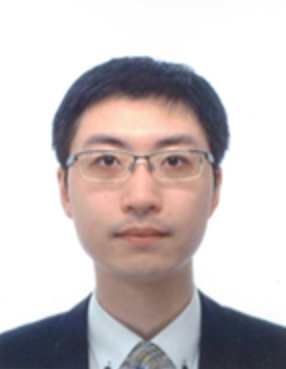
シスメックス株式会社
薬事部
係長蒋 名威
詳細をみる 閉じる2013年 シスメックス株式会社 入社
~2022年 シスメックス株式会社薬事部 所属
2022年~ シスメックス株式会社薬事部 係長セミナー概要
2020年より中国医療機器、体外診断試薬関連法規制の改訂が行われており、2021年11月までに主要な法規制の改訂が完了しており、施行が開始されております。2024年では医療機器管理法のパブコメが発出され、従来の医療機器監督管理条例から、法律の格上げを図り、さらなる規制強化が見込まれています。
中国における医療機器(IVD製品を含む)の許認可取得プロセス、申請時の留意点などについて、直近の状況および最新の動向についてご紹介します。
A) 医療機器管理法(パブコメ)の概要
B) 輸入品国産化の最新動向(パブコメ)
C) 電気安全性国家標準・業界標準の改定動向(IEC 61010 3.1版対応)
-
14:25~15:35(名刺交換:15:40~15:50)
日本における医療機器の規制の動向時間 60分
質疑応答 10分
名刺交換 10分
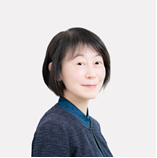
ジョンソン・エンド・ジョンソン株式会社
薬事本部田中 志穂
詳細をみる 閉じる業界団体における活動
2019年4月~現在: 医機連法制委員会 委員長
2021年7月~現在: 医機連 プログラム医療機器規制対応SWG 主査 など
所属
2018年4月まで: 日本メドトロニック株式会社
2018年5月~現在: ジョンソン・エンド・ジョンソン株式会社 薬事本部セミナー概要
医薬品医療機器法の5年目の見直し検討の際に、医療機器業界から提言書を厚労省に提出しました。
その後の医薬品医療機器制度部会にての議論を経て、法律改正の方向性に関してとりまとめとして発出されています。そのとりまとめの内容を中心に、今後の医療機器規制を含めて説明します。
1. 薬機法改正にかかわる制度部会での検討内容について
2. プログラム医療機器に関する取組(Dash for SaMD2)について
3. サイバーセキュリティに関連する規制の動向 -
15:35~15:40
閉会の挨拶時間 5分

公⽴⼤学法⼈神奈川県⽴保健福祉⼤学
シニアフェロー座長 昌子 久仁子
詳細をみる 閉じる元テルモ取締役上級執行役員
東京大学公共政策大学院 非常勤講師
公益財団法人医療機器センター 医療機器産業研究所 上級研究員 -
15:40~15:50
名刺交換
2025年4月10日(木) 新規参入者必見!医療機器産業の最前線と実例から学ぶ成長戦略
- 申込期間 2025年4月10日(木)まで
- 聴講期間 2025年4月10日(木)9:30-16:00
- 価格 33,000円(税込)
*早割はございません
*定員 60名
*4月2日以降はクレジットカードのみ受付(当日現金不可)
*既に来場事前登録をお済みの方・・・再度来場事前登録不要
①「Medtec Japan来場事前登録受付完了通知」メール内の「登録情報の変更」をクリック
↓
②最下段にある「※ Medtec セミナー(有料)も参加しますか?」を「参加する」に変更し
「確認画面へ」をクリック
↓
③「※ 参加を希望するセミナー・日程を選択してください。」で該当のセミナーをチェック
↓
④お支払い処理へ
セミナープログラムは、予告なく変更になる場合がございます。
【セミナー会場】
東3ホール主催者事務局
-
9:30~9:40
開会の挨拶・オーバービュー時間 10分
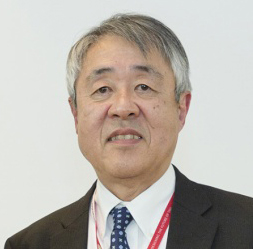
国立循環器病研究センター
名誉所員
国立研究開発法人日本医療研究開発機構 医療機器・ヘルスケアプロジェクト
プログラムディレクター座長 妙中 義之
詳細をみる 閉じる1976年 大阪大学医学部卒業
1980~2016年 国立循環器病センター研究所で研究を開始、研究所人工臓器部長、副所長、研究開発基盤センター長
1984年~1986年 米国ユタ大学、テキサス心臓研究所に留学
2011年~2013年 内閣官房医療イノベーション推進室次長
2015年~現在 日本医療研究開発機構プログラムスーパーバイザー、プログラムディレクターセミナー概要
・医療機器分野への新規参入の実例を学ぶ
・いくつかの参入方法の実例と成功のために必要なことを知る
・異業種や支援機関との連携の有効利用
・会場参加者が知りたいことに答える質疑応答に時間を割きたい -
9:40~10:20
医療機器CDMO(Contract Development and Manufacturing Organization)の実状時間 40分
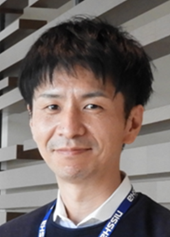
NISSHA株式会社
事業開発室 コーポレートマーケティング部
メディカル事業推進グループ
グループ長
秋田 真哉
詳細をみる 閉じる2003年より製薬会社医療機器部門で整形外科向けインプラントの販売担当、
2007年より外資系医療機器メーカーの泌尿器科部門でアカウントセールスマネージャー
2014年より外資系医療機器メーカーの聴覚検査機器部門で事業部長を経て
2021年より同社にて医療機器開発製造受託事業の推進に従事セミナー概要
北米を中心とした医療機器CDMO(開発製造受託)の実状やトレンド、単なる医療機器部品製造から設計・開発・製造のアウトソーシング(CMOからCDMOへ)また医療機器の高機能化に対応すべく専門的Tierとしての当社取り組みを紹介。
今後国内やアジア地域へ医療機器CDMOを周知し国内(アジア)の医療機器産業活性化を目指す。
・グローバル医療機器CDMO事業の現状(北米市場を中心に)
・医療機器CDMO事業のトレンド
・NISSHA株式会社の医療機器CDMO事業の紹介 -
10:20~11:00
国立がん研究センター東病院が挑む医療現場発の医療機器開発の取組みのリアル時間 40分
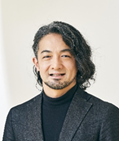
国立がん研究センター東病院
医療機器開発推進部門
医工連携支援室長冨岡 穣※講師が変更となりました
詳細をみる 閉じる2007.3 大阪大学工学部電子情報エネルギー工学科 卒業
2009.3 大阪大学大学院工学研究科環境エネルギー工学専攻(博士前期課程) 修了
2009.4 独立行政法人医薬品医療機器総合機構 入職
2019.6 同 退職
2019.7 国立研究開発法人国立がん研究センター 入職(現職)
2021.9 大阪大学大学院工学研究科環境エネルギー工学専攻(博士後期課程) 修了(博士(工学))セミナー概要
国立がん研究センター東病院は、手術や内視鏡の領域を中心に、産学連携による医療機器開発を活発に行い、数多くの医療機器開発を企業と共に進めてきた歴史がある。一方で、2015年に手術支援ロボットの開発を行うA-Tractionを当院の医師がエンジニアと共に創業し、従来のコンセプトとは一線を画す新しい手術支援ロボットを開発し上市した経験を基に、企業のみではなくアカデミア研究機関やスタートアップとの連携による医療現場のニーズを解決する、「世界を変える医療機器」の開発を推進している。アカデミアが有している技術から医療で本当に使える技術を探索することは、砂漠で砂金を探すのと同じだと揶揄されるが、我々は本気で「世界を変える医療機器」を生み出せる技術との出会いと世界を変える医療機器開発プロジェクトを創出する活動を日々地道に継続している。この取り組みはまだ始まったばかりではあるものの、これまでの当院の活動を振り返ると同時に、当院の今後の取組みの展望について紹介し、多くの方に当院の活動を知っていただき応援していただく機会としたい。
・医療現場のアンメットニーズを解決する医療機器開発
・アカデミアに眠る技術の探索やコア技術を有する企業との連携
・技術シーズを有する研究機関や医療ニーズを有する医療機関などとの多施設連携 -
11:00~11:40
異業種より医療機器産業への参入事例時間 40分
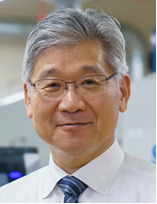
株式会社 東鋼
代表取締役社長寺島 誠人
詳細をみる 閉じるはばたく中小企業300社に選定
地域未来牽引企業に選定
東京商工会議所 勇気ある経営大賞受賞(2019年)
オメガドリルが超モノづくり部品大賞日本力賞受賞(2019年)
オメガドリルをはじめ医療機器分野で4件の特許を取得。
切削工具の開発で培った技術を応用した医療機器の開発を目指し、世界の人々のお役に立つ事を目指している。セミナー概要
1997年にプリウスが発売された時に、遠くない将来にEVの時代が来る事を予測。当時の東鋼は売り上げの8割が自動車産業向けであり、エンジン車が無くなったらとシミュレーションをした結果、売上げの1/3が消滅する事がわかった。以降、新たなマーケットを探し続け、2006年に航空機、医療機器産業に参入。いろいろな方に教えを乞いながら、勉強をしながら業許可やISOを必要に迫られながら取得。独自のドリルを開発し世界11カ国で特許を取得。現在では売り上げの35%が医療機器であり、その内の15%が輸出である。その経験を共有させて頂くと共に、実践から学んでわかった事も共有させて頂く。
1. 先ずは参入し、走りながら学び、考える
2. どんな仕事も真のニーズを見つけるのは容易ではない
3. 良いものを作っても、売る技術が無くては売れない
作るのが技術なら、売るのも技術
4. 海外展開
5. 参入してわかった市場と業許可 -
11:40~11:50
名刺交換
11:50~12:50
休憩【展示会場もご覧ください】 -
12:50~13:30
医療機器メーカーから、部材供給を希望されるみなさまに期待すること時間 40分
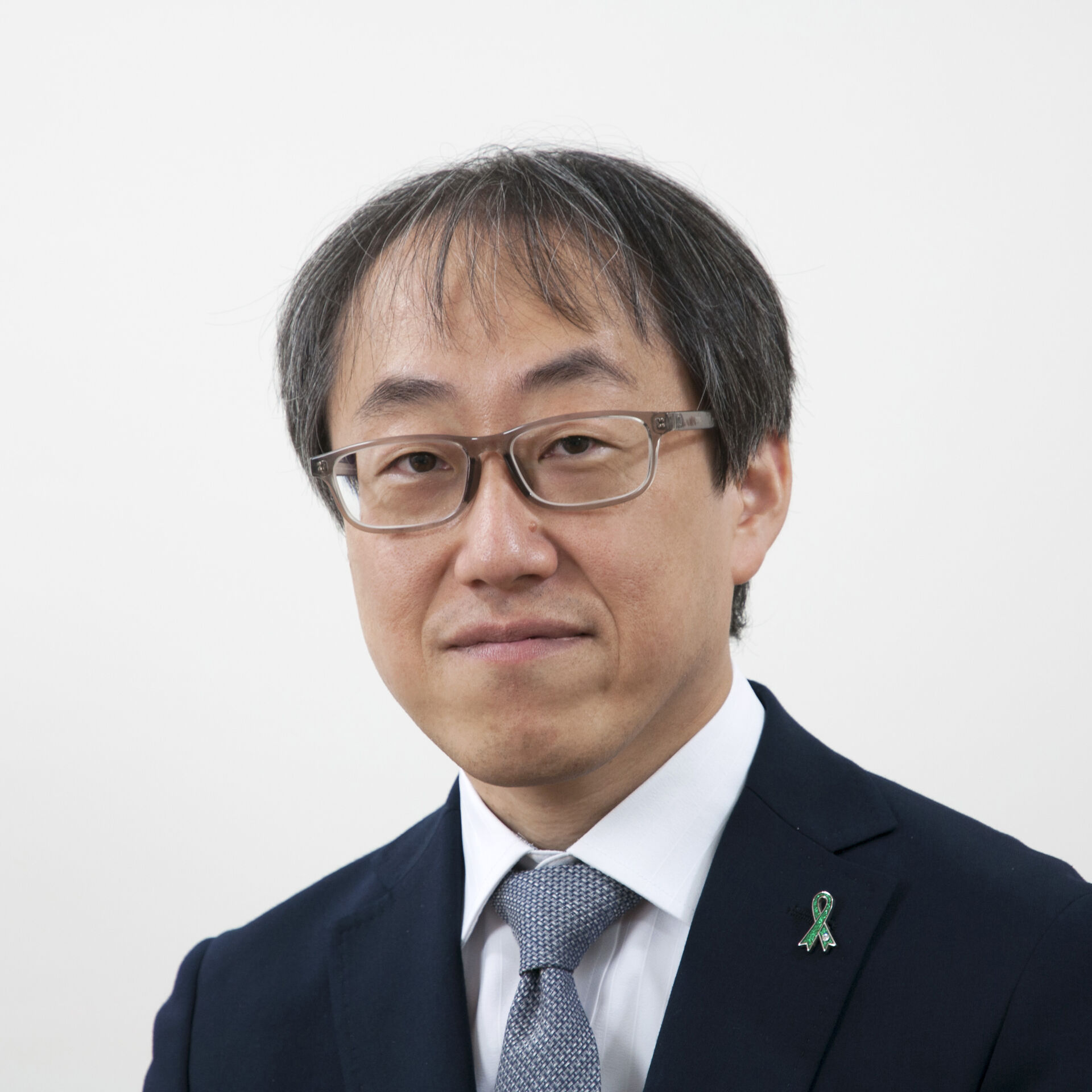
大研医器株式会社
薬事学術情報課
課長小林 武治
詳細をみる 閉じる1991年 大研医器株式会社に入社
2000年 大研医器株式会社 商品開発研究所に異動 医工連携による企画開発業務に従事
2003年 大研医器株式会社 商品開発研究所 商品研究グループ長
2011年 薬事・安全管理・知財部門の責任者 規格・基準の作成、保険関連業務も従事
2022年 学術情報部門の責任者を兼任セミナー概要
ものづくり企業が初めて医療機器分野に参入するときに、乗り越えなければならないハードルや、部材供給先である医療機器メーカーが求めていることを知る必要があります。
本セミナーでは、医療機器分野への参入にあたって必要な知識や注意すべき点、特にその中でも医療機器メーカーがものづくり企業に期待するポイントについてご紹介いたします。医療機器メーカーへの部材供給を希望されるみなさまや、医療機器メーカーへの部材供給を行っているものの事業が拡大しないと悩んでいる方に対して、現役医療機器メーカーの担当者が、医療機器の製造販売業者との付き合い方を本音で語ります。
・医療機器メーカーの考える品質
・部材供給企業選定の基準
・部材供給企業へ期待すること -
13:30~14:10
医療機器開発におけるグローバルエコシステム構築に向けた取組み時間 40分
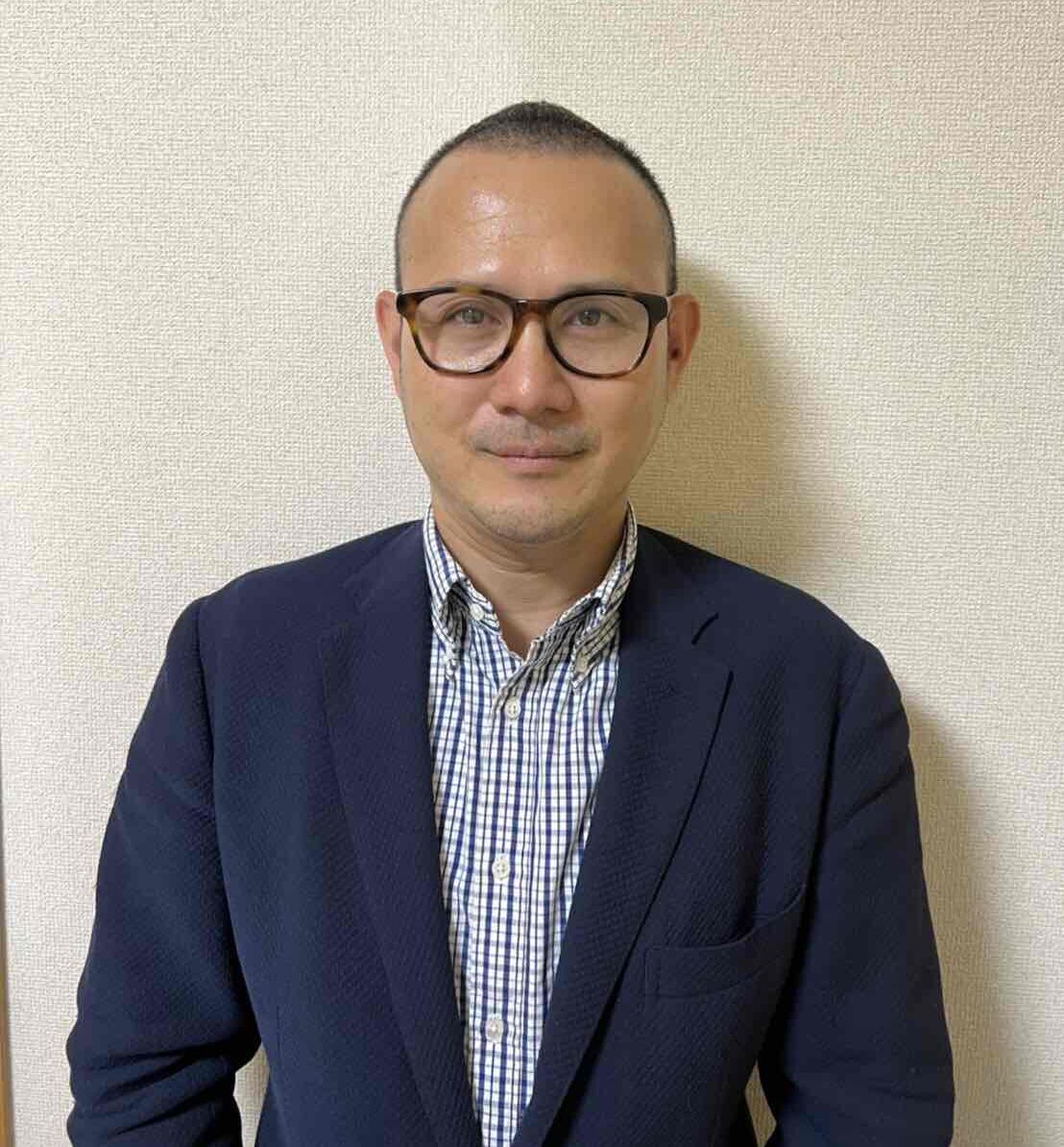
大阪商工会議所
産業部ライフサイエンス振興担当
課長松山 裕
詳細をみる 閉じる2003年入所。10年以上に亘り医療機器分野の産業振興の実務に携わる。2021年より現職。2016~2017年度大阪市立大学非常勤講師。2021年度より大阪大学産学連携・クロスイノベーションイニシアティブ招へい教員、AMED「医工連携イノベーション推進事業地域連携拠点自立化推進事業」研究開発代表者。
セミナー概要
大阪商工会議所は、健康・医療を戦略分野に位置づけ、創薬、医療機器開発の最先端医療から、日常のヘルスケア、スポーツによる健康増進まで、幅広い産業振興に注力している。医療機器分野では、全国最大規模の医工連携プラットフォーム事業「次世代医療システム産業化フォーラム」を通じて、四半世紀に亘り、医療機器開発のあらゆるステージを対象とした事業を展開。数多くの医療機器開発プロジェクトの創出や事業化の実績を重ねている。社会課題に連動した医療ニーズにも注目し、医療従事者の負担軽減や患者が快適な医療を受けるための環境を整える「優しい病院」の実現に向けた取り組みなども推進。今後、医療機器開発のグローバルエコシステム構築に向けた取組みを加速化する。
・健康・医療分野の事業展開
・医工連携マッチングから開発、製造、販路開拓まで一貫支援
・社会課題に連動した医療ニーズにもとづく医療機器等の創出
・スタートアップ・新規参入型企業のグローバル展開支援プログラム
-
14:10~14:20
名刺交換 -
14:20~15:50
パネルディスカッション時間 90分

国立循環器病研究センター
名誉所員
国立研究開発法人日本医療研究開発機構 医療機器・ヘルスケアプロジェクト
プログラムディレクター座長 妙中 義之
詳細をみる 閉じる1976年 大阪大学医学部卒業
1980~2016年 国立循環器病センター研究所で研究を開始、研究所人工臓器部長、副所長、研究開発基盤センター長
1984年~1986年 米国ユタ大学、テキサス心臓研究所に留学
2011年~2013年 内閣官房医療イノベーション推進室次長
2015年~現在 日本医療研究開発機構プログラムスーパーバイザー、プログラムディレクター
NISSHA株式会社
事業開発室 コーポレートマーケティング部
メディカル事業推進グループ
グループ長
秋田 真哉
詳細をみる 閉じる2003年より製薬会社医療機器部門で整形外科向けインプラントの販売担当、
2007年より外資系医療機器メーカーの泌尿器科部門でアカウントセールスマネージャー
2014年より外資系医療機器メーカーの聴覚検査機器部門で事業部長を経て
2021年より同社にて医療機器開発製造受託事業の推進に従事
国立がん研究センター東病院
医療機器開発推進部門
医工連携支援室長冨岡 穣※講師が変更となりました
詳細をみる 閉じる2007.3 大阪大学工学部電子情報エネルギー工学科 卒業
2009.3 大阪大学大学院工学研究科環境エネルギー工学専攻(博士前期課程) 修了
2009.4 独立行政法人医薬品医療機器総合機構 入職
2019.6 同 退職
2019.7 国立研究開発法人国立がん研究センター 入職(現職)
2021.9 大阪大学大学院工学研究科環境エネルギー工学専攻(博士後期課程) 修了(博士(工学))
株式会社 東鋼
代表取締役社長寺島 誠人
詳細をみる 閉じるはばたく中小企業300社に選定
地域未来牽引企業に選定
東京商工会議所 勇気ある経営大賞受賞(2019年)
オメガドリルが超モノづくり部品大賞日本力賞受賞(2019年)
オメガドリルをはじめ医療機器分野で4件の特許を取得。
切削工具の開発で培った技術を応用した医療機器の開発を目指し、世界の人々のお役に立つ事を目指している。
大研医器株式会社
薬事学術情報課
課長小林 武治
詳細をみる 閉じる1991年 大研医器株式会社に入社
2000年 大研医器株式会社 商品開発研究所に異動 医工連携による企画開発業務に従事
2003年 大研医器株式会社 商品開発研究所 商品研究グループ長
2011年 薬事・安全管理・知財部門の責任者 規格・基準の作成、保険関連業務も従事
2022年 学術情報部門の責任者を兼任
大阪商工会議所
産業部ライフサイエンス振興担当
課長松山 裕
詳細をみる 閉じる2003年入所。10年以上に亘り医療機器分野の産業振興の実務に携わる。2021年より現職。2016~2017年度大阪市立大学非常勤講師。2021年度より大阪大学産学連携・クロスイノベーションイニシアティブ招へい教員、AMED「医工連携イノベーション推進事業地域連携拠点自立化推進事業」研究開発代表者。
-
15:50~16:00
閉会の挨拶時間 10分

国立循環器病研究センター
名誉所員
国立研究開発法人日本医療研究開発機構 医療機器・ヘルスケアプロジェクト
プログラムディレクター座長 妙中 義之
詳細をみる 閉じる1976年 大阪大学医学部卒業
1980~2016年 国立循環器病センター研究所で研究を開始、研究所人工臓器部長、副所長、研究開発基盤センター長
1984年~1986年 米国ユタ大学、テキサス心臓研究所に留学
2011年~2013年 内閣官房医療イノベーション推進室次長
2015年~現在 日本医療研究開発機構プログラムスーパーバイザー、プログラムディレクター
2025年4月11日(金) 医療機器産業のグローバル展開(米国展開を中心に)
- 申込期間 2025年4月11日(金)まで
- 聴講期間 2025年4月11日(金)9:30-15:30
- 価格 33,000円(税込)
*早割はございません
*定員 60名
*4月2日以降はクレジットカードのみ受付(当日現金不可)
*既に来場事前登録をお済みの方・・・再度来場事前登録不要
①「Medtec Japan来場事前登録受付完了通知」メール内の「登録情報の変更」をクリック
↓
②最下段にある「※ Medtec セミナー(有料)も参加しますか?」を「参加する」に変更し
「確認画面へ」をクリック
↓
③「※ 参加を希望するセミナー・日程を選択してください。」で該当のセミナーをチェック
↓
④お支払い処理へ
セミナープログラムは、予告なく変更になる場合がございます。
【セミナー会場】
東3ホール主催者事務局
-
9:30~9:35
開会の挨拶時間 5分

公益財団法人医療機器センター
医療機器産業研究所 事業化支援室
上級研究員座長 髙山 修一
詳細をみる 閉じる1970年 オリンパス光学工業株式会社(現オリンパス株式会社)
2007年 取締役常務執行役員
2009年 取締役常務執行役員 研究開発センター 研究開発統括室長兼 医療技術開発本部長
2010年 取締役常務執行役員 ライフ・産業システムカンパニー長 兼 統括本部長
2011年 取締役専務執行役員 映像事業グループ 映像事業グループプレジデント
2011年 代表取締役社長 執行役員 兼 映像事業グループプレジデント
2012年 退任
2017年~ 現職
2018年~ 日本医療研究開発機構 プログラムスーパーバイザー -
9:35~10:05
医療機器産業ビジョン2024 を踏まえた国際展開戦略時間 30分
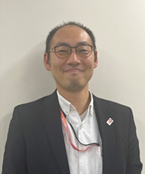
経済産業省
商務・サービスグループ ヘルスケア産業課 医療・福祉機器産業室
室長渡辺 信彦
詳細をみる 閉じる2004年経済産業省入省。中小企業庁に配属の後、資源エネルギー庁、産業技術環境局にて勤務、2012年よりジョンズホプキンス大学高等国際関係大学院へ派遣。以後、通商政策局、在イラン大使館、大臣官房厚生企画室、在トルコ大使館参事官。2023年より商務・サービスグループ医療・福祉機器産業室長、現在に至る。
セミナー概要
2023年に弊省は、医療機器産業の劇的な変化の中で国内企業が目指すべき方向性及び弊省に求められる産業支援を議論すべく、産官学で構成する「医療機器産業ビジョン研究会」を設置し、その成果として医療機器産業ビジョン2024を公開した。これを受けて昨年度は、2回の委員会実施を通じて本ビジョンを踏まえた医療機器産業をとりまく社会、産業動向等を整理し、今後の支援にあるべき方向性に関して更なる議論を行った。本セミナーにおいては、医療機器産業ビジョン2024を、具体化のための弊省の取り組みと併せて紹介する。
・医療機器産業の成長に向けたグローバル市場の獲得
・米国をはじめとしたグローバル展開へ踏み出す企業の創出
・イノベーションを生み出す研究開発環境の構築 -
10:05~11:05
ヘルスケア産業分野の海外展開支援の取組み時間 60分
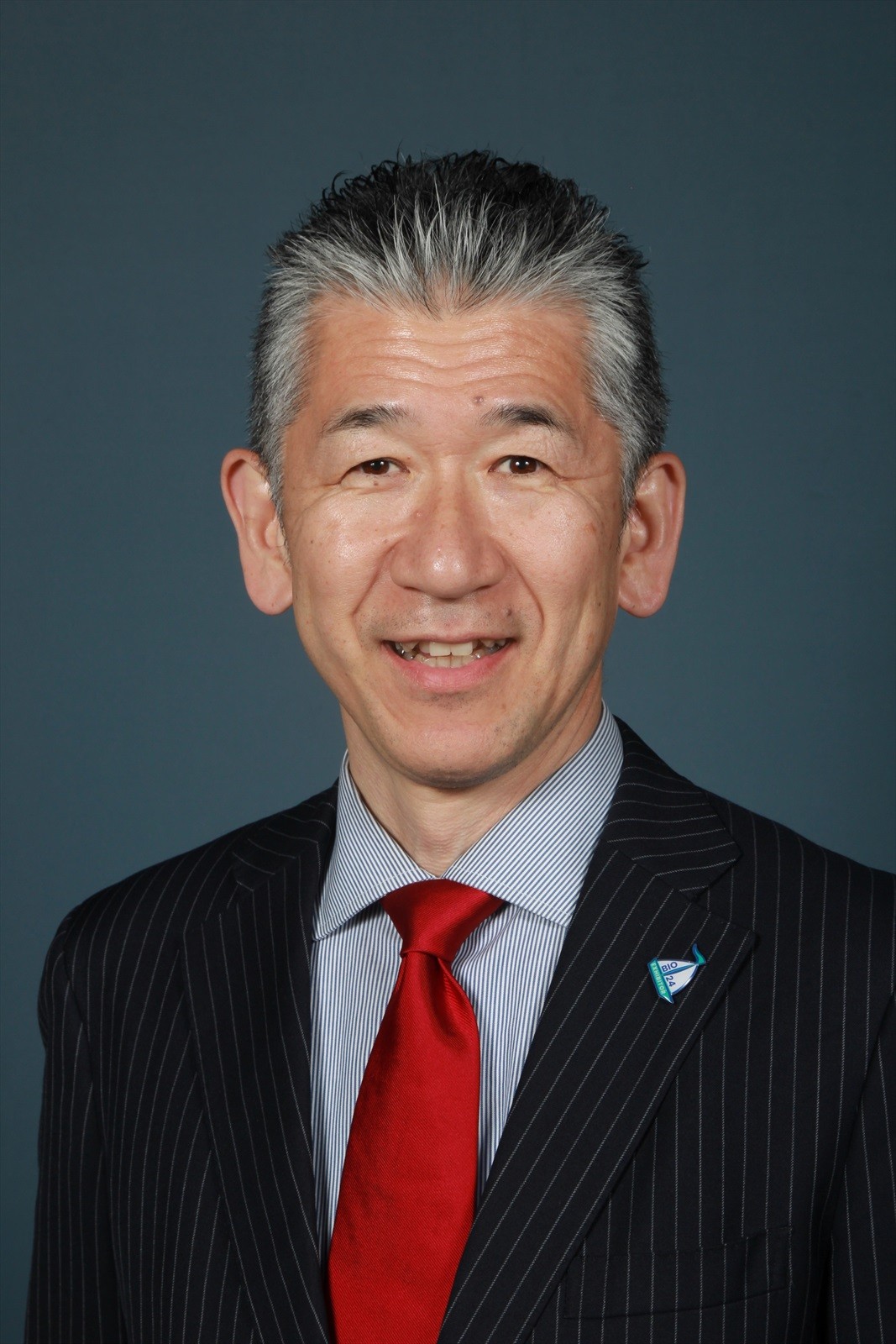
独立行政法人 日本貿易振興機構(ジェトロ)
海外展開支援部
主幹(ヘルスケア産業担当)
千葉大学
客員教授佐藤 拓
詳細をみる 閉じる1993年4月ジェトロ入会、ニューヨーク事務所勤務後、企業誘致課長、ヘルスケア産業課長等経て現職。ヘルスケア分野の国際ビジネス支援に20年超取り組む。日本医療研究開発機構(AMED)課題評価委員、ちば健康・医療ものづくり産業支援推進会議アドバイザー。法政大学大学院経営学修士課程終了。
セミナー概要
ジェトロでは、2003年より、国内外での健康課題解決のため、国内ヘルスケア産業の海外展開支援に取り組んでいる。医療機器分野については、2010年より、世界有数の医療機器専門見本市であるMEDICA(ドイツ)、Arab Health(UAE)などにジャパンパビリオンを設け、海外企業との商談の場を提供している。近年では、AI画像読影など革新性の高い製品、サービスを有するスタートアップに対し、展示会での支援のほか、海外アクセラレータや医療機関(Mayo Clinicなど)と連携したアクセラレーションプログラム、メンタリングなども提供している。本セミナーでは、ジェトロのヘルスケア産業分野における海外展開支援の取組みと、支援事例などをご紹介する。
・ジェトロについて
・ヘルスケア産業の海外展開支援①(海外展示会等)
・ヘルスケア産業の海外展開支援②(アクセラレーション等)
・支援事例
-
11:05~11:50
グローバル市場を見据えた医療関連製品・サービスの展開可能性に挑むメディカルコンソーシアムの立上げ
時間 45分
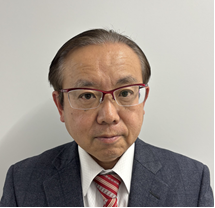
東洋紡株式会社
ライフサイエンス本部メディカルコンソーシアム準備室
部長白濱 憲昭
詳細をみる 閉じる1991年 川澄化学工業入社
2014年 取締役上席執行役員 生産部門担当
2016年 取締役上席執行役員 研究開発部門担当
2018年 取締役常務執行役員 研究開発部門担当
2020年 東洋紡株式会社入社
2023年 ライフサイエンス本部メディカル事業総括部 部長
2025年 現職
セミナー概要
医療機器産業は成長市場であるが、治療系医療機器分野では日本企業の存在感が薄い。この背景には、1社単独では医療機器の開発・上市に必要な専門性やリソース確保が難しい為と考えており、この状況を打破すべく2024年6月に「メディカルコンソーシアム準備委員会」を設立した。
既に、医療機器関連企業に加えて、素材・部材メーカー、異業種メーカー、ベンチャーキャピタリスト等の幅広い業種の企業と、医療機器開発経験がある医師に参画頂き、開発テーマ探索・企画や製品販売を検討している。
本セッションでは本準備委員会の活動を通した示唆や将来構想を紹介する。
・メディカルコンソーシアム準備委員会の概要
・メディカルコンソーシアムの特徴
・メディカルコンソーシアムの将来構想 -
11:50~12:00
名刺交換
12:00~13:00
休憩【展示会場もご覧ください】 -
13:00~13:45
日本の医療イノベーションのグローバル展開を成功に導くためのポイント時間 45分
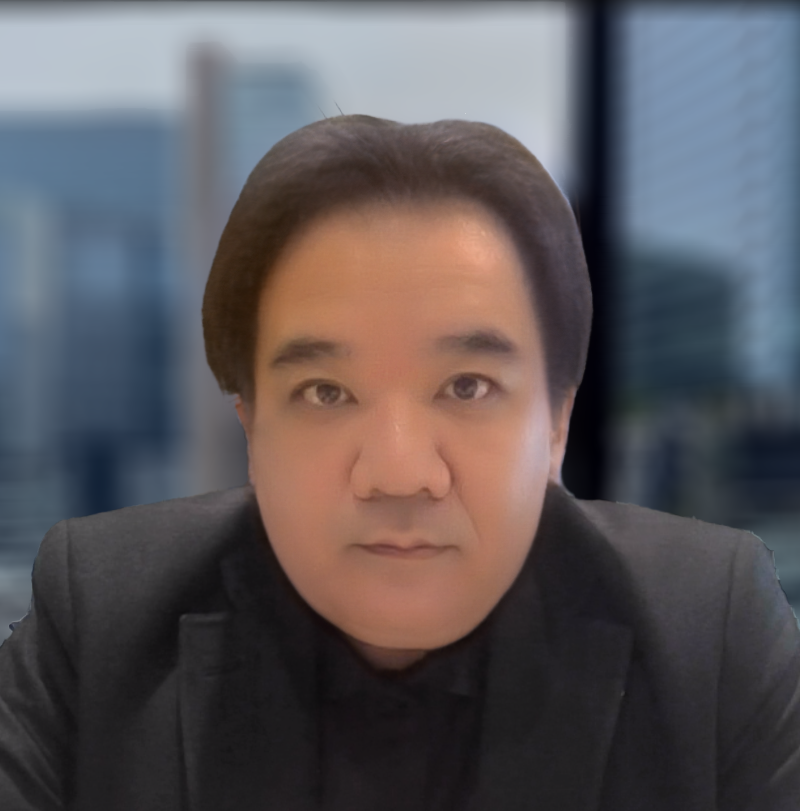
メドテックアクチュエーター合同会社
ゼネラル・マネージャー東 潤一
詳細をみる 閉じる大学卒業後、ソフトウェアエンジニアを経て2000年に大阪商工会議所に就職。主に医療、ヘルスケア分野の産業振興と国際連携の構築に従事。2024年9月にメドテックアクチュエーターの日本拠点を開設。
セミナー概要
医療・ヘルスケア分野のイノベーションの事業化を成功させるには、早い段階から海外市場や国際的なパートナーシップを視野に入れた戦略が必要不可欠です。本講演では、海外市場への展開を前提とした事業戦略をたてる上での留意点をメドテックアクチュエーターのアクセラレーションプログラムのコンセプトや事例を踏まえてご紹介します。
・事業化をグローバル目線で考えることの重要性
・海外のエコシステム内で共有される評価軸
・国際展開を考える上での留意点 など -
13:45~14:30
国立がん研究センターによる日本発医療機器開発の伴走支援と国際展開支援時間 45分
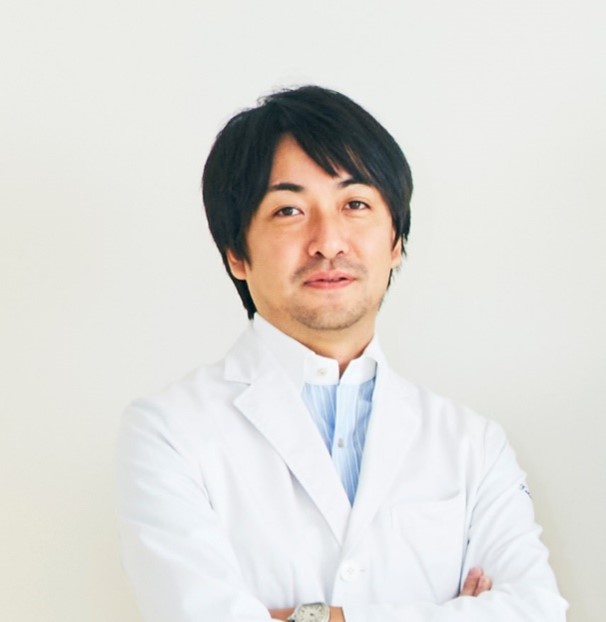
国立がん研究センター東病院
医療機器開発支援部
部長竹下 修由
詳細をみる 閉じる2006年千葉大医学部卒。市中・大学病院にて外科修練後、2015年よりシンガポール国立大で手術支援ロボット、がん診断支援ベンチャーとの共同研究に従事。2016年よりジャパンバイオデザイン参画、国立がん研究センター東病院NEXT医療機器開発センターで勤務開始。2021年より同スタートアップ支援室長、2022年より同医療機器開発支援部長。
セミナー概要
NEXT医療機器開発センターは2017年に開設され、産学官・医工連携で臨床ニーズに基づいた次世代に望まれる革新的医療機器の開発を進めている。医師・看護師・診療放射線技師などの医療職、PMDAでの医療機器審査経験者、知的財産専門家、大手医療機器メーカー・製薬企業・ベンチャー企業・コンサル出身者など、高い専門性と多様性を持ったチームで活動し、「医療機器で世界を変える」をミッションに掲げ、①がんの生存率向上、②診療環境の改善、③合併症の低減、④QOLや機能の向上、をもたらす医療機器開発を推進している。今回、スタートアップの創出・伴走支援や、国際展開支援、人材育成の取り組みと事例を共有させていただく。
・NEXT医療機器開発センターの紹介
・AMED事業による伴走支援と国際展開支援
・事例紹介 -
14:30~14:40
名刺交換 -
14:40~15:20
合同質疑時間 40分

公益財団法人医療機器センター
医療機器産業研究所 事業化支援室
上級研究員座長 髙山 修一
詳細をみる 閉じる1970年 オリンパス光学工業株式会社(現オリンパス株式会社)
2007年 取締役常務執行役員
2009年 取締役常務執行役員 研究開発センター 研究開発統括室長兼 医療技術開発本部長
2010年 取締役常務執行役員 ライフ・産業システムカンパニー長 兼 統括本部長
2011年 取締役専務執行役員 映像事業グループ 映像事業グループプレジデント
2011年 代表取締役社長 執行役員 兼 映像事業グループプレジデント
2012年 退任
2017年~ 現職
2018年~ 日本医療研究開発機構 プログラムスーパーバイザー
東洋紡株式会社
ライフサイエンス本部メディカルコンソーシアム準備室 部長白濱 憲昭
詳細をみる 閉じる1991年 川澄化学工業入社
2014年 取締役上席執行役員 生産部門担当
2016年 取締役上席執行役員 研究開発部門担当
2018年 取締役常務執行役員 研究開発部門担当
2020年 東洋紡株式会社入社
2023年 ライフサイエンス本部メディカル事業総括部 部長
2025年 現職

メドテックアクチュエーター合同会社
ゼネラル・マネージャー東 潤一
詳細をみる 閉じる大学卒業後、ソフトウェアエンジニアを経て2000年に大阪商工会議所に就職。主に医療、ヘルスケア分野の産業振興と国際連携の構築に従事。2024年9月にメドテックアクチュエーターの日本拠点を開設。

国立がん研究センター東病院
医療機器開発支援部 部長竹下 修由
詳細をみる 閉じる2006年千葉大医学部卒。市中・大学病院にて外科修練後、2015年よりシンガポール国立大で手術支援ロボット、がん診断支援ベンチャーとの共同研究に従事。2016年よりジャパンバイオデザイン参画、国立がん研究センター東病院NEXT医療機器開発センターで勤務開始。2021年より同スタートアップ支援室長、2022年より同医療機器開発支援部長。

(予定)
独立行政法人 日本貿易振興機構(ジェトロ)海外展開支援部
主幹(ヘルスケア産業担当)
千葉大学客員教授佐藤 拓
詳細をみる 閉じる1993年4月ジェトロ入会、ニューヨーク事務所勤務後、企業誘致課長、ヘルスケア産業課長等経て現職。ヘルスケア分野の国際ビジネス支援に20年超取り組む。日本医療研究開発機構(AMED)課題評価委員、ちば健康・医療ものづくり産業支援推進会議アドバイザー。法政大学大学院経営学修士課程終了。
-
15:20~15:30
閉会の挨拶時間 10分

公益財団法人医療機器センター
医療機器産業研究所 事業化支援室
上級研究員髙山 修一
詳細をみる 閉じる1970年 オリンパス光学工業株式会社(現オリンパス株式会社)
2007年 取締役常務執行役員
2009年 取締役常務執行役員 研究開発センター 研究開発統括室長兼 医療技術開発本部長
2010年 取締役常務執行役員 ライフ・産業システムカンパニー長 兼 統括本部長
2011年 取締役専務執行役員 映像事業グループ 映像事業グループプレジデント
2011年 代表取締役社長 執行役員 兼 映像事業グループプレジデント
2012年 退任
2017年~ 現職
2018年~ 日本医療研究開発機構 プログラムスーパーバイザー
